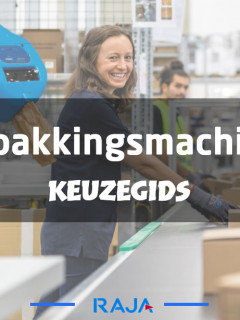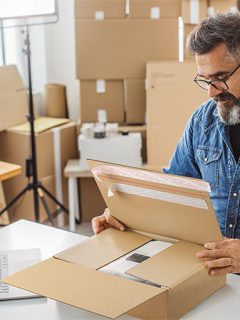On land, sea and air … Dutch products are exported en masse every year. Packing your goods efficiently is a crucial factor in an export shipment. In this article, we look at how to optimally protect your products against shocks, damage and theft. On the other hand, we look at how to reduce the weight and volume of your shipment to reduce transport costs.
► Step 1: Choose the right primary protection
The first step is immediately already one of the most crucial in the whole packaging process. Everything depends on good primary protection. This is actually the ‘external’ layer of your packaging. This often gets the hardest of all due to factors such as rain, moisture, impact, etc. Depending on the properties of your product, you have a choice of different types of primary protection:
| Product weight | Type of primary protection |
| Less than 50 kg | Double corrugated box |
| Between 50 and 70 kg | Double-corrugated high-capacity box |
| Between 70 and 500 kg | Triple-corrugated box |
| More than 500 kg | Wooden pallet box |
As you can see from the table above, for an export shipment, you need at least a box made of double corrugated cardboard. Preferably even from triple corrugated cardboard. These boxes offer top protection for heavy and fragile loads, among other things. In addition to the characteristics of your product, we also need to consider the transport conditions. These also determine which type of export packaging you should use:
- Number of times of transhipment: It is quite possible that 1 product has to be transported by land, air and water. The greater the number of times of transshipment, the sturdier you should pack your product.
- Climatic conditions: combat culprits like moisture with a desiccant and keep the temperature under control thanks to a refrigerated box.
- Transport and storage time: the longer your product is transported, the better the protection will need to be and the sturdier the box. For absolute certainty, it is best to choose a box made of triple corrugated cardboard.
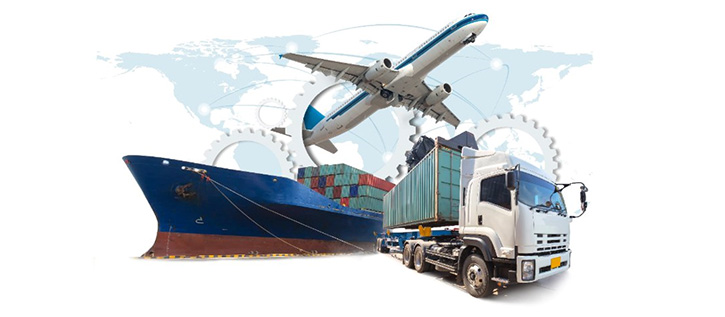
► Step 2: Choose the right secondary protection
After primary protection or ‘external packaging’, we will now look at secondary protection. This is basically the padding material inside your box or crate. It usually involves paper cushions or air cushions. This protective material has a big impact on the total weight of your export shipment. So it is important to choose protective material that is both sturdy and light at the same time. Make sure your products are protected on all sides and do not touch each other. Some points of interest:
- Make sure your parcel is lightly padded: you can choose from air cushions, foam film, padding chips or paper cushions. Air cushions are usually the lightest solution!
- Adapt your box to the size of your product: for example, choose a box with variable height. This will ensure that you only need to use a minimum of padding material.
- Choose a box with integrated protection: thanks to a box fixing film, no additional protective material is needed.
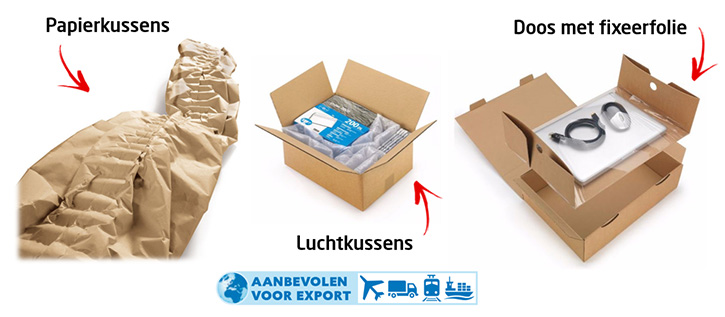
► Step 3: How do you efficiently close your box or crate?
Your box or crate is well filled by now. Time to close it then! Make sure your boxes are properly closed as this will make it easier to stack them on a pallet afterwards. No tape at hand? Then you can decide to close your boxes with an industrial stapler. Finally, a word about export crates: these are usually made of wood, so tape can’t do much. Wooden boxes are therefore best closed with a sturdy strapping tape.
What is the best way to close your box? You can use one of the following 3 techniques:
| Lightweight parcels from < 20 kg |
► Apply the tape in a U-shape. Attach the tape along the entire length (where the flaps meet) at the top and bottom of the parcel. |
| Medium-weight parcels from < 40 kg |
► First make a U-shaped closure and then reinforce with a second U-shape along the short sides of the box. This is ideal for transporting medium-heavy parcels or for parcels that will be stored for long periods. |
| Heavy parcels from > 40 kg |
► Closing boxes with tape in a H-shape is the safest closure. Stick the tape along the entire length of the box, both at the top and bottom. Two extra strips of tape as reinforcement are applied over the edges each time. |

► Step 4: Prepare your pallet correctly for an export shipment
For large quantities, it is advisable to opt for export shipment via pallet. This way, you move many more goods at once. Here we give you some tips on how to prepare your pallet properly:
- Never place your parcels over the edge of the pallet.
- Place the smallest parcels at the bottom and the largest at the top.
- Protect your stacked boxes with dividers, corner protectors and cover sheets.
- Use wooden pallets that comply with the ISPM15 standard. Pallets made of wood fibre, cardboard and plastic do not need treatment for export.
- Wrap your entire pallet with wrapping film.
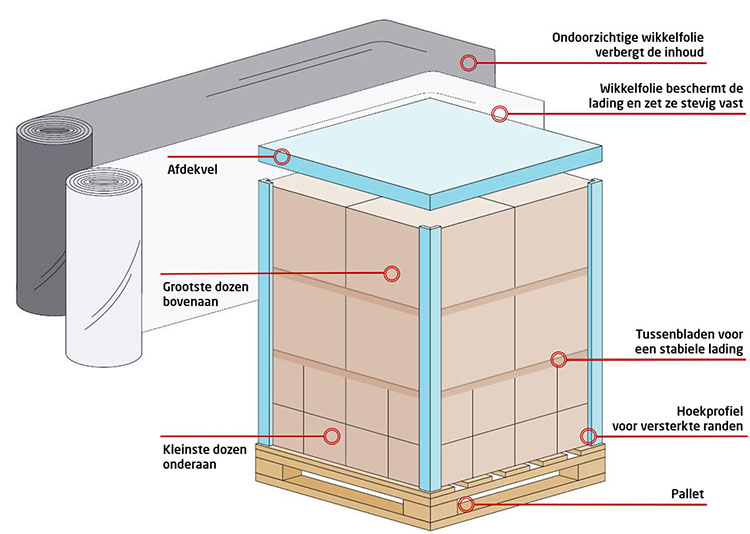
► Step 5: Complete your shipment with the right labels
Now we’ve done everything right, would you think? Well, almost… One more important thing remains: identification! Make sure it is clear to both sender and recipient what the destination and contents are. The easiest way to solve this is to stick a transparent document sleeve on the box. Stick the document sleeve clearly visible on your wrapped pallet so that all important documents are immediately recognisable.
Finally, to ensure that your parcel reaches its final destination in good condition, we recommend applying safety indicators or warning labels. You can opt for:
| Temperature indicators | Warns against a sudden rise or fall in temperature. |
| Shock indicators | Warns if the parcel has been dropped during loading, transport or unloading. |
| Tilt indicators | Warns if the package has tilted. |
| Packaging or hazard labels | For hazardous products (e.g. flammable, toxic, flammable) or fragile and vulnerable goods. |
| Security tapes or -labels |
When removed, the tape leaves a message on your parcel. This way you know if your parcel was opened before it reached its final destination. |
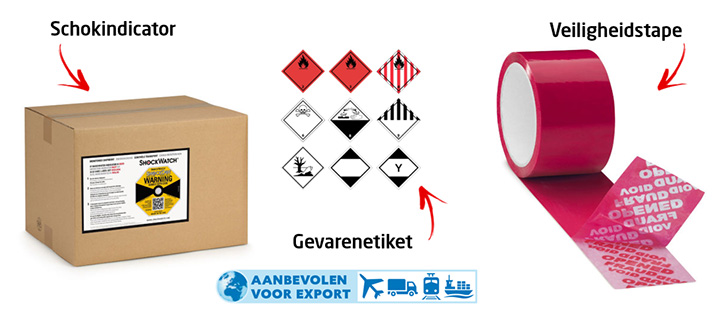
Ready to start working on your export shipment yourself? Share your own tips or suggestions on exporting below. You can find the full overview of our export packaging on RAJA’s website.
View our export packaging here










